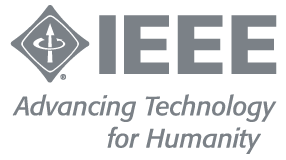Exploring the DNA of an organization is the Kimberly Wiefling way to create a shared sense of identity among even globally diverse, dispersed teams.

Recently, several of my clients have become extremely interested in exploring what they call their "corporate DNA". At first, I resisted, because I was concerned that this metaphor implied that they were incapable of changing. But for the most part, this model is being used to explore the unique identity of an organization - the historical strengths that are admired and should be preserved and transmitted to future generations.
Almost every kid who has the luxury of getting an education learns the basics of DNA. DNA is what causes a giraffe to have a long neck, kangaroos to have pouches, and porcupines to have quills instead of fur. Tadpoles turn into frogs, not butterflies, because of their DNA. And a lot of behavior has its roots in an organism's DNA. Birds have wings, but dogs don't, therefore dogs don't fly. Snakes, lacking both legs and wings, resort to crawling. But what is the meaning of the DNA of an organization?
If you look up "corporate DNA" on Wikipedia you'll be redirected to an article on "organizational culture." Here's how organizational culture and cultural DNA are related. Organizational culture is "the way we are" today, including the laundry list of do's and don’ts that the old-timers share with newbies on their first day of work. It's "the way we do things around here," even if we've forgotten why we're doing them. It’s the collection of observable patterns in an organization at the present time. People naturally assume that these patterns will continue into the future. And they probably will, unless the organization experiences a deep, sometimes radical, change. Organizational culture is made visible through behaviors, and behavior is driven by assumptions, beliefs, and patterned thinking, in addition to the conscious choices that we make to perpetuate that culture. As my mentor, Dr. Edgar Schein, has taught me, organizational culture has both an internal side—how we get along, how we do things—and an external side—what we do to survive and grow, including our strategy and tactics. Culture infuses both the internal and external through the deeper assumptions of who we are, our identity, and our sense of our brand based on our history.
Organizational DNA is a property of the culture, and is the historical basis of why we behave this way - the genetic code at the root of these behaviors. Like the DNA of birds and snakes, it influences whether our organization will fly or crawl. Although we can change our behaviors radically, our DNA establishes some boundaries. A dog that's been abused might bark aggressively or bite humans, but it won't start eating worms, tweeting, or building a nest out of twigs!
Culture as Internal Brand. One useful way to think about organizational culture is as your internal brand. A brand is a promise. Most companies carefully consider what their brand communicates externally, but what is the brand promise that your company makes to your employees? In the same way that customers have expectations based on brand image, your organizational culture creates expectations in your employees. I strongly believe that an authentic external brand must be based on an organizational culture with which it is aligned.
DNA Isn't Destiny. As a scientist, I worry that DNA as a metaphor for corporate identity isn't technically accurate. People frequently talk about their organization’s DNA as if it can't, or shouldn't, be changed. Some executives proudly speak of their corporate history as if their future is determined primarily by their past. So before we embrace this metaphor, there are a few things we should know about DNA.
DNA in nature isn't forever fixed, nor does it unalterably determine what happens in the life of an organism. Mutations occur naturally, scientists intentionally create genetic modifications, and reproductive processes combine genes in ways that create new and sometimes surprising results, like the baby "Zonkey" in the picture below. Similarly, organizations that grow through mergers and acquisitions must integrate the combined DNA of previously distinct entities.
Most genetic code isn't expressed. For example, over 98% of human genetic material is so-called "non-coding DNA." This DNA isn't junk! It's important to regulating and protecting the genome, but it doesn't directly dictate our development as human beings. A parallel in organizations is the importance of focusing on stories and examples that bring us together around our shared purpose, and selectively forget what doesn't contribute to a better future.

Mutations occur naturally: reproductive processes combine genes in ways that create new and sometimes surprising results, like the baby "Zonkey" in this picture.
Environmental factors like temperature and light can impact gene expression. For example, Thomas Hunt Morgan's Experimental Zoology reports that genetically identical caterpillars exposed to different colors of light during their chrysalis stage developed dramatic differences in wing color. Likewise, organizations are subject to external influences, and some (but not most) do find ways to break free of their historical roots, rather than continue unproductive trends, and therefore avoid becoming extinct.
Here is yet more evidence that we are not slaves to our DNA: The old paradigm of “genetic determinism” is being replaced with the idea that genes respond to information – both external environments and cognitive (internal) environments. Gene expression is impacted by the context in which they exist.
In spite of my scientific misgivings, I've found that exploring the DNA of an organization can be an extremely effective way to create a shared sense of identity among even globally diverse, dispersed teams. Groups with a clear understanding of their shared core identity, and the kinds of behaviors that naturally spring from this understanding, form more cohesive teams. Individual behaviors tend to naturally align with this team identity, without the need for direction, rules, and oversight.
Kimberly Wiefling
If you want to dive deeper into this topic, see the Kimberly Wiefling class about Building a Great Company Culture as part of the TVLP Leading High Growth Ventures Program. Kimberly Wiefling is a globally-recognized educator and part of the faculty of the TVLP Institute where she teaches Leadership. She helped a large number of companies in Asia, especially in Japan, and Europe in improving leadership and team management skills.
Ph. Credit: Unsplash


















